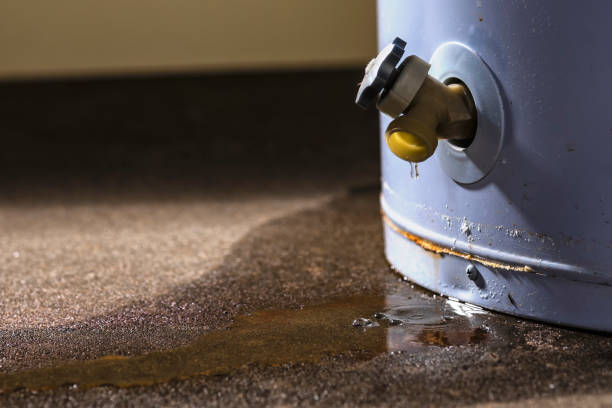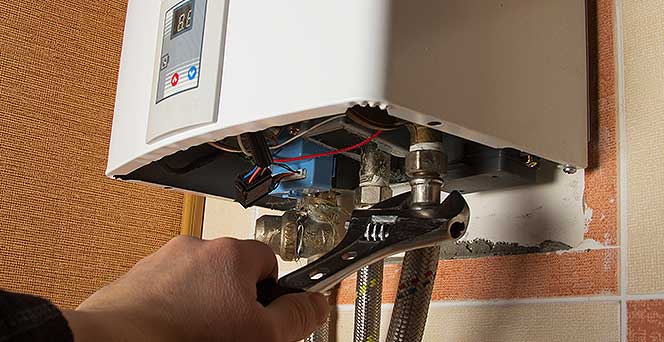Necessary Protocols for House Owners Handling Broken Hot Water Systems
Necessary Protocols for House Owners Handling Broken Hot Water Systems
Blog Article
Are you currently searching for information around Broken Water Heaters?

Whether it is situated in the basement or a separate room, broken water heaters can cause stress and anxiety. Having no warm water supply is additionally bothersome.
Turn Off Power Source
Before calling the plumber, shut down a gas water heater by transforming the temperature dial. This is generally located on top of the thermostat. If you have a model that operates on electric power, switch off the breaker. This will certainly protect against electrocution, specifically if there is a leakage as water is a conductor. Generally, the heating element turns off when the water hits a details temperature. Yet with a broken storage tank, it may malfunction. Cutting it off guarantees you remain secure.
Cut Off the Cold Water Supply
Cut off the containers faucet water supply from the resource. This goes from your primary water line right into the container. When your tank is in good condition, the cold water stops filling out when the storage tank is full. Considering that it is leaking, the water will proceed to stream. Close the shutoff discovered at the top of the heating system. Turn this clockwise to shut it off. You have to turn off that major water supply line outside your home if you can not locate it or reach it.
Call the Plumber
After doing the very first 2 safety actions, you must call your plumber ahead immediately to fix a fractured water heater. Remember that your system will not just conk out dramatically overnight. There are usually indications that your aging hot water heater has sediment build-up in the inside. Remember of the following:
Do not wait for major flooding to call the plumber. By then, you will certainly have to invest even more to recover your property. Rather, as quickly as you identify these signs, have a specialist pertained to examine your hot water heater say thanks to. Normally, water heaters have a life-span of regarding 8 to 12 years. With normal examination as well as upkeep, you can extend its life.
Tidy up Residential or commercial property
After calling the plumber, record damage by remembering and images so you can declare your house owner's insurance coverage. From there, begin the immediate cleanup. Secure any type of important belongings to stop additional saturating. Remove any type of standing water to protect against mold and mold growth. If you have a completely submersible water pump, utilize that to drain pipes the water. Otherwise, the standard pail method will certainly likewise work. Attempt to wipe out everything, including wall surfaces and baseboards. Keep them running to keep air circulating if you have an electrical fan and also dehumidifier. This will certainly aid hinder mold development.
Keep in mind, if you observe any type of problems with your water heating unit, call the pros right away. You can not take this issue lightly since a malfunctioning thermostat can increase water temp to a dangerously high degree, leading to unexpected burns.
Whether it is located in the cellar or a different space, busted water heating units can cause stress and anxiety. Prior to calling the plumber, shut off a gas water heating system by turning the temperature level dial. After doing the first 2 safety actions, you must call your plumber to come right away to take care of a fractured water heating unit. If you have a submersible water pump, make use of that to drain the water. Keep in mind, if you discover any kind of concerns with your water heater, call the pros right away.
8 REASONS YOUR HOT WATER HEATER IS NOT WORKING & HOW TO FIX
Water Heater Problems & Solutions
Loose or Damaged In-Line Valve
Unlike a water leak near the bottom of your water tank, a water leak on top of your system can be easily fixed. A common cause of water tank leaks includes a loose in-line valve. This is a handle that is located at the top of the water tank that is engineered to activate or deactivate the flow of water. To fix this problem, you will need to secure the nut that holds the ball or in-line valve in its location. If the leak becomes more severe once it is tightened, you will be required to travel to your local hardware store to purchase a new in-line valve for your water heater.
Damaged Pressure Relief Valve
Most types of water heaters are equipped with a pressure relief valve that is engineered to discharge pressure from the water tank when it becomes too high. If this valve on top of your water heater begins to leak, we recommend purchasing a new one online or from your local store. The process of removing and replacing pressure relief valves is not complicated.
No Warm Water
If you have an electric water heater in your home, the most typical cause of a lack of warm water is a broken heating element. Your water heater is equipped with two heating elements that are tasked with heating incoming water in the water tank. Once a heating element begins to malfunction, you will have little to no hot water to use for showering, cleaning, and laundry.
Low Supply of Hot Water
Are you continuously running out of warm water? This issue may be a byproduct of a cracked dip tube. This tube is engineered to push cold water to the base of your water tank to be heated. Once a crack or hole begins to form in the dip tube, the incoming supply of cold water may be released near the top or middle of your tank. As a result, the cold water on top of the tank will be sent to the faucets and showers in your house. This hot water heater problem can only be fixed by replacing the dip tube on your system. Since the process of installing a new dip tube is complex, we recommend calling a certified technician for help.
A low supply of warm water may also be a signal of excess sediment buildup in your water tank. As your water heater reaches the middle of its life cycle, minerals in water including magnesium and calcium will begin to collect at the base of the water tank. As the minerals continue to grow, there will be less room in the water tank to store hot water. To resolve this problem, flush your water heater to remove the excess minerals.
Water is Too Warm or Cold
If the water in your shower feels uncomfortable hot or cold, you can adjust the temperature of your water by changing the settings on your thermostat. Setting the temperature to 120 degrees Fahrenheit may help you save money on your utility bills. This is an excellent temperature to use if you’re worried about scalding or skin irritation. Does this temperature feel too cold? You may also adjust the thermostat to 140 degrees Fahrenheit to make your showers more pleasant. If your hot water heater is not working when you change the temperature, this is an indicator of a broken thermostat. Immediately find a certified plumbing or heating contractor in your area to repair or replace your thermostat.
Low Water Pressure
Low water pressure is not always caused by a malfunctioning water heater. If you live in an older home with smaller water pipes, the flow of water will be restricted prior to reaching our kitchen or bathroom skins. The only way to eliminate this hot water heater problem is to connect new ¾-inch water lines to your system. Another type of problem that may negatively impact your water pressure includes calcium deposits in water pipes.
As magnesium and calcium begin to form in your pipes, the diameter of your water lines will become smaller. As a result, the warm water from your water heater will not be able to travel in an efficient manner to your sinks or appliances. Since the process of replacing water pipes includes removing drywall, an average homeowner that does not have a plumbing license will not be able to fix this hot water heater problem.
https://www.wmhendersoninc.com/blog/8-reasons-your-water-heater-is-not-working-how-to-fix/

We were shown that editorial about Maintaining & Draining a Water Heater from someone on another web property. Appreciated our write up? Please share it. Help somebody else locate it. Thanks a bunch for your time. Kindly check up our site back soon.
24-hour help? Dial! Report this page